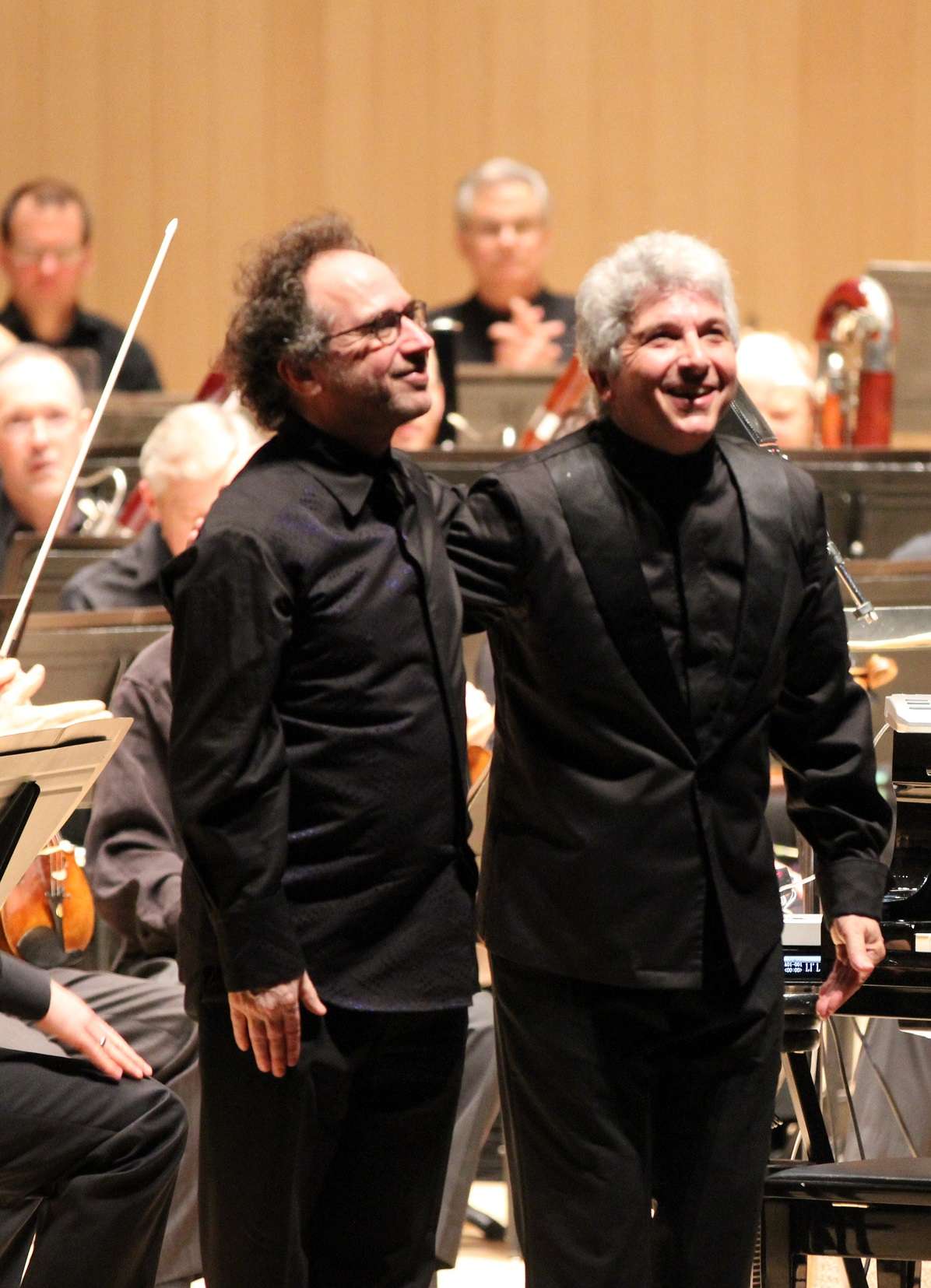|
Back
Electronic explorations Toronto
Roy Thomson Hall
03/02/2013 -
Tod Machover: Jeux Deux
Nicole Lizée: Arcadiac (*)
Mason Bates: Alternative Energy (*)
Michael Chertock (HyperPiano), Mason Bates (Electronica)
The Toronto Symphony Orchestra, Peter Oundjian (Host and Conductor), Carolyn Kuan (*) (Conductor)

T. Machover & P. Oundjian (© Josh Clavir)
This year the Toronto Symphony Orchestra as hired Boston-based composer/inventor Tod Machover to curate the annual New Creations Festival.
Machover is director of hyperinstruments at the MIT Media Lab. Accordingly, the program opened with Peter Oundjian conducting Machover’s Jeux Deux for HyperPiano and Orchestra. The HyperPiano turns out to be a Yamaha Disklavier Grand with an attachment to a separate small keyboard that the performer (Michael Chertock in this case) can also “play” and this sets in motion a number of other keys on the HyperPiano while the pianist plays his keys. The result is like a pianist performing with one, two or three ghost pianists at the same time. It is such a mesmerizing thing to watch that one is in danger of forgetting to listen to the music - which also energetically involves the whole orchestra. It comes as a bit of a surprise that it was composed for the Boston Pops Orchestra (2005). Yes, it is playful - but not exactly lightweight.
The title of the piece refers to Debussy’s Jeux, his final orchestral score, completed in 1912 for Diaghilev’s Ballets Russes. It certainly is a playful game in itself. I could hear no Debussian modes (I’m sure that’s not the point), but more of a composer who takes cues from the approaches of, say, Stravinsky, and/or Bernard Herrmann and/or Messiaen. It has three linked movements: “Swift and Stealthy”, “Freely Lyrical”, and “Buoyant and Precise”. It has sections that could well be titled “Welcome to the Madhouse”; a quiet solo section in the middle comes as a blessed relief from the more hyper parts.
The other two works on the program, conducted by Carolyn Kuan, also had electronic content. The title of Canadian composer Nicole Lizée’s Arcadiac does not refer to Greek Arcadia but to electronic games that were played in arcades in the 1970s and 1980s. Two huge video monitors showed the games with all their explosions and crashes; the orchestra accompanied the games’ sounds. If, as the program notes state, the orchestral music is to add a human element to the electronic sounds and images, it was very obvious that the conductor had to adhere closely to the pre-set electronics; the human element became machine-driven.
The third work was Mason Bates’s Alternative Energy, created for the Chicago Symphony Orchestra (where Bates is composer-in-residence) in 2011. It is in four parts, each one denoting a time and place, starting with “Ford’s Farm, 1896", the farm being that of Henry Ford’s family where the future tycoon tinkered with his inventions. Then “Chicago, 2012", conjuring up the FermiLab particle collider. Another century ahead is “Xinjiang Province, 2112" evoking a wasteland created by energy over-production; finally, “Reykjavik 2222" when Iceland has become a rainforest and we hear exotic birdsong (shades of Ottorino Respighi’s Pini di Roma of 1924). The composer worked the electronica (the particle collider section was deeply impressive) while conductor Kuan marshalled the large orchestra with its augmented percussion section through the many sections of complicated, off-kilter rhythms.
This Saturday informal concert was followed by a lobby party where Mason Bates acted as deejay. The TSO New Creations Festival continues March 7 and 9.
Michael Johnson
|